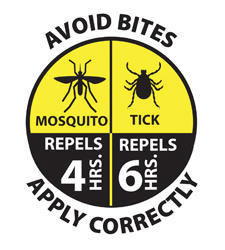The Environmental Protection Agency (EPA) regulates most insect repellents applied on the skin.
Maybe you thought this regulation was a role of the Food and Drug Administration (FDA). After all, the FDA oversees food and drug safety, food labeling laws and, to a lesser extent, cosmetics that go on the skin. And some insect repellents claim to be "natural." They may even contain food-related ingredients, like soybean oil or lemon.
With the Zika virus becoming a health emergency, we are giving a little explanation about bug spray labeling and what you need to know if you have eczema (atopic dermatitis), contact dermatitis or asthma.
Michael Land, MD, FAAAAI, an allergist and member of AAFA’s Medical Scientific Council, offers tips on how people with skin conditions and sensitive skin can protect themselves from bites this summer.
What does safety and effectiveness mean?
The EPA regulates most bug sprays for both safety and effectiveness.
- Safety refers to using the product according to label directions.
- Effectiveness refers to whether or not the product actually works at keeping bugs away.
Safety does not refer to whether or not the product might contain an allergen or an ingredient that irritates your skin.
When a repellent includes one of these ingredients, you will see it listed on the label:
- DEET
- IR3535
- Picaridin
- PMD
Sprays with these ingredients must be registered with the EPA.
However, the EPA does not require manufacturers to list inactive ingredients. Keep in mind that some sprays do not have to contain high concentrations of chemicals in order to work. So a label might show a high percentage of inactive chemicals on the label.
Example of EPA graphic
Are there non-chemical alternatives?
The EPA studied other ingredients for safety, but not effectiveness. Repellents made with these oils do not have to be registered with the EPA:
- Citronella oil
- Cedar oil
- Geranium oil
- Peppermint and peppermint oil
- Soybean oil
The American Academy of Pediatrics (AAP) said recently that these products do not work as well as chemical ones, and that data for their use in children is limited.
Doctors recommend applying only to intact skin.
“Avoid areas of broken skin, particularly areas that are scraped open or recently scratched,” says Dr. Land. “These spots could burn or hurt if the spray is applied in the open area.”
What if you have asthma?
For some people, asthma triggers include aerosol sprays. If an aerosol spray triggers your asthma, try a repellent in a non-aerosol pump. Some personal repellents also come in a lotion. If lotions are difficult to find, you may be able to buy them online.
Here are some other tips to avoid bites and irritation:
- If skin is sensitive, you can reduce exposure by applying the sprays to clothing rather than directly to skin.
- You can also buy clothing treated with repellent if you plan an outdoor activity like hiking or camping.
- Do not give mosquitoes a place to breed – remove standing water around your home.
- Put nets over strollers.
- Cover up in light fabrics outside.
- Wash your hands after applying the spray to yourself or others, and wash children’s hands.
Medical Review July 2016.



Comments (0)